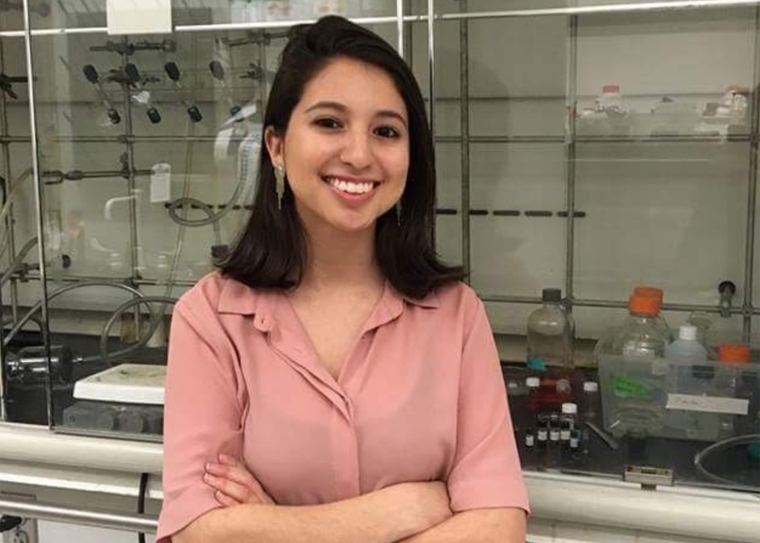Chemistry and Conservation
March 8, 2017
Lilah Drafts-Johnson

Though the connection between Rembrandts and chemical compounds may not be readily apparent, Noalle Fellah ’16 has found their perfect union in art preservation. Fellah is now pursuing a PhD in chemistry at New York University, where she is currently conducting research on the nucleation process of crystals found in LCD systems. “It’s fascinating to explore digital art as we move away from paintings and classical sculptures in the digital age,” Fellah says.
During her time at Oberlin, she balanced her interests in science and art within the form of a double major in chemistry and art history. Fellah, who hails from Bowling Green, Ohio, was active in the Oberlin science community and worked to share her passion as an OWLS (Oberlin Workshop and Learning Sessions) leader in organic chemistry for two semesters, coordinating the program her senior year. “I love chemistry, and I love teaching and talking about chemistry to other people,” Fellah says.
Cultural heritage and art preservation has always been a focus in Fellah’s research. She spent the summer before her senior year conducting research with her chemistry advisor, Associate Professor of Chemistry Catherine Oertel. Fellah's research built on a previous project that examined corrosion of lead pipes in organs, and its concurrent effects on the sound produced by the organ. Fellah worked on a class of lead-oxide carboxylate compounds that were related to the ones found during the decomposition of lead pipes. Fellah cites this experience as one of the highlights of her Oberlin career that inspired her to continue exploring her research options.
Fellah also credits her Oberlin classes for allowing her to delve into the world of art. She recalls one of her favorite classes at Oberlin, Ethical & Practical Issues in the Conservation of Modern Art, a hands-on course about painting conservation taught by art history instructor Heather Galloway. Fellah remembers being able to get up close and personal with artwork in the Allen Memorial Art Museum in a way that few people are able to experience, in order to better view the artwork and learn how to prevent its degradation.
Her interest took her to Maastricht, a city in the Netherlands, for a semester abroad her junior year, where she discovered the Netherlands government’s commitment and investment in art preservation. She returned to the Netherlands this past summer, this time in Amsterdam, as part of a Natural Science Foundation cultural heritage grant. Fellah split her time between the chemistry department labs of the University of Amsterdam and the Rijks Museum. There, she and four other students studied the degradation of the pigment ultramarine, a color commonly found in the baroque works of the 17th century.
The move from small town Oberlin to New York City might seem daunting to some, but Fellah has transitioned well. As she begins to narrow her focus on her interests in graduate study, she appreciates the lessons she learned from her undergraduate experience. “Oberlin, more so than other schools, gave me the opportunity to navigate more social channels than other people are typically exposed to in undergrad,” Fellah says. “Although Oberlin is a small school, there are so many different people with diverse interests from all kinds of backgrounds.”
Tags:
You may also like…
Oberlin Named Top Producer of Fulbright Students for 2024-25
February 25, 2025
Nineteen Oberlin College and Conservatory students and alumni were awarded Fulbright grants for the 2024-25 academic year, making the college the No. 1 producer of honorees among U.S. undergraduate-only institutions.
Beyond the Writing Center: Abbie Patchen ’24
November 7, 2024
Abbie Patchen ’24 is a JD candidate at the UNC School of Law. At Oberlin Abbie minored in Writing & Communication. Here, she reflects on how her Oberlin courses and professors shaped her approach to learning and writing.
Longtime Allen Memorial Art Museum Director Andria Derstine Announces Departure
October 14, 2024
After more than a decade of exemplary leadership, Andria Derstine is leaving her post as the John G. W. Cowles Director of the Allen Memorial Art Museum (AMAM) at Oberlin College


